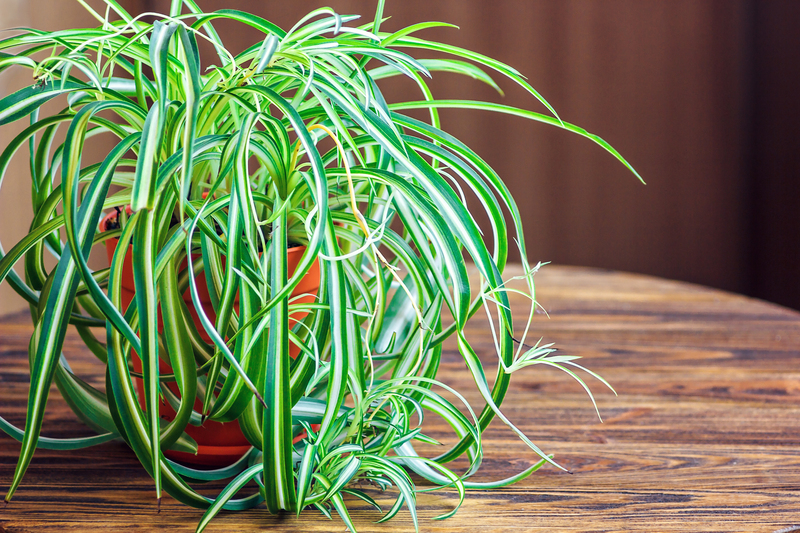Sprout New Ideas: Kicking Off Your Garden Makeover
Posted on 07/09/2025
Sprout New Ideas: Kicking Off Your Garden Makeover
Are you daydreaming about transforming your outdoor space into a vibrant haven? Whether you have a modest balcony or sprawling backyard, every garden makeover starts with a simple idea. By nurturing those ideas and planning wisely, you can create a stunning landscape that rejuvenates your senses and increases your home's value. Read on to discover practical steps, expert insights, and creative garden transformation strategies to breathe new life into your surroundings.
Why Start Your Garden Makeover?
A well-designed garden not only enhances curb appeal but also provides mental well-being, encourages outdoor activity, and supports local ecosystems. With a thoughtful approach, your outdoor makeover becomes much more than a cosmetic update--it becomes a sanctuary for both people and wildlife.
- Boost home value: Attractive landscaping can increase property value by up to 12%.
- Enhance emotional well-being: Being surrounded by greenery is proven to lower stress and improve mood.
- Encourage sustainability: A garden makeover can incorporate sustainable practices like composting and native planting.
- Promote healthy living: Gardening is a rewarding physical activity that gets you moving and outdoors.

Step 1: Envision Your Dream Garden
Define Your Purpose
Begin by considering how you want to use your garden space. Do you want a quiet retreat, a play area for kids, a productive vegetable patch, or a space for entertaining guests? Defining your goals is the crucial first step in a successful garden makeover project.
Gather Inspiration
Seek ideas from design magazines, social media, local botanical gardens, or your neighborhood. Create a digital scrapbook or a physical mood board of plants, color palettes, and layouts that resonate with your vision.
- *Take note of garden layouts you love*
- Observe sunlight patterns throughout the day
- Consider desired features, such as water elements, patios, or vertical gardens
Step 2: Assess What You Have
Survey Your Existing Yard
Before diving in, carefully evaluate your current outdoor space. Consider these key aspects:
- Soil quality and composition
- Sunlight exposure and shade
- Drainage and slopes
- Existing trees, plants, and structures
- Potential problem areas, such as compacted soil or invasive weeds
Understanding your garden's conditions is essential for crafting a design that thrives.
Identify the Strengths and Weaknesses
Make a list of features you like and those you wish to change. For example, perhaps the mature hedge offers privacy that you want to preserve, or you might want to remove dated paving stones.
Step 3: Creating a Functional and Beautiful Design
Choose a Design Style
Sprouting new ideas often means mixing styles. Will a modern, minimalist approach suit your home, or do you prefer a wild cottage garden feel? Some popular garden makeover design styles include:
- Modern minimalist: Clean lines, simple plants, and neutral colors
- Cottage: Abundant blooms, winding paths, and vintage touches
- Zen-inspired: Stones, water features, and minimalist planting
- Wildlife-friendly: Native plants, ponds, and pollinator habitats
- Edible gardens: Fruits, veggies, and herbs integrated into beds and containers
Mapping Out Zones
Divide your outdoor space into functional zones, such as lounging areas, dining spots, or a play area. Think about flow: How do you want to move through the space? Use paths, plantings, or low walls to delineate these zones.
Plant Selection Tips
Choose plants suited to your climate, soil, and light conditions. Consider a layered approach for maximum visual interest:
- Tall trees and shrubs for structure
- Smaller shrubs and perennial flowers for color
- Groundcovers and annuals for texture
Pro tip: Mix evergreen and deciduous species to ensure year-round appeal.
Step 4: Planning for Sustainability
Eco-Friendly Practices
Modern garden makeovers increasingly incorporate sustainable methods. Explore:
- Composting: Turn kitchen and garden waste into nutrient-rich compost.
- Rainwater harvesting: Install rain barrels to water your plants efficiently.
- Native plants: Choose species that thrive naturally in your area, reducing the need for water and fertilizers.
Encourage Biodiversity
Include features that attract beneficial wildlife, such as bees, butterflies, and birds. Native flowering plants, bird baths, and bug hotels can all increase biodiversity in your new garden.
Step 5: Budgeting and Sourcing Materials
Set a Realistic Budget
Garden makeovers can range from budget-friendly DIY updates to high-end professional landscapes. Outline your priorities--such as new seating, a water feature, or mature trees--and allocate funds accordingly.
Smart Sourcing Strategies
- Reuse or repurpose existing materials where possible
- Buy plants off-season or from plant swaps
- Source secondhand outdoor furniture and decor
- Explore local nurseries for regionally-suited plant varieties
Step 6: Getting Started with Your Garden Makeover
DIY vs. Professional Help
Decide which tasks you can tackle yourself and where expert input might help. Simple planting, painting, or building raised beds are approachable DIY projects. Larger changes--like installing irrigation systems or large patios--may require a landscape architect or contractor.
Project Stages
- Clear and prepare the site: Remove debris, old plants, and unwanted structures.
- Install hardscaping: Lay paths, patios, walls, or pergolas.
- Work on the soil: Amend and fertilize to support healthy growth.
- Plant trees, shrubs, and flowers according to your design.
- Add finishing touches: Mulch, garden art, lighting, and seating.
Seasonal Timing
The best time to embark on your garden remodeling depends on your region, but generally, early spring or fall are ideal for most planting and construction projects.
Creative Garden Makeover Ideas to Try
Add Living Walls or Vertical Gardens
If space is limited, use empty walls or fences for vertical gardens. Grow herbs, ferns, or succulents vertically for a lush effect that maximizes even compact spaces.
Install a Water Feature
The sound of water instantly boosts relaxation. From small tabletop fountains to in-ground ponds, there's a feature to suit any garden renovation plan.
Create an Outdoor Room
Use trellises, pergolas, or strategically planted hedges to form semi-enclosed outdoor "rooms." Cozy seating, rugs, and outdoor cushions turn these spaces into inviting extensions of your home.
Incorporate Raised Beds or Planters
Raised beds not only look attractive but also make gardening more accessible. Try mixing edibles and ornamentals for a practical, unique approach to your garden makeover.
Introduce Lighting
String lights, solar stake lamps, and lanterns extend garden enjoyment into the evening and highlight key features.
Use Paths and Edging Creatively
Pathways crafted from gravel, stone, or recycled materials guide visitors and add dynamic flow to the landscape.
Maintaining Your Revamped Garden
Develop a Care Routine
- Regularly water and fertilize your new plantings
- Weed and mulch to suppress unwanted growth
- Prune trees and shrubs for optimal health
- Monitor for pests and diseases
Update Seasonally
Keep your garden transformation fresh by updating containers, annual displays, or garden art seasonally. Embrace the evolving nature of your outdoor space.
Conclusion: Let Your Garden Flourish!
Sprouting new ideas and kick-starting your garden makeover doesn't have to be overwhelming. With thoughtful planning, a touch of creativity, and a clear vision, you can transform any outdoor space into a personalized oasis. Embrace the journey, learn from nature, and enjoy watching your dream garden take root and blossom. Happy gardening!

FAQs: Sprouting New Garden Ideas
What is the cheapest way to makeover a garden?
Utilize seeds instead of mature plants, repurpose found materials, and swap plants with neighbors for a low-cost yet effective garden revamp.
How do I choose the best plants for my garden makeover?
Focus on native species and select plants that match your sunlight, soil, and water conditions for a resilient and beautiful garden.
How can I make my small garden appear larger?
Use vertical planting, create winding paths, and include mirrors or light-colored features to visually expand your space.
How often should I update my garden?
While foundational elements last for years, seasonal updates with annual blooms, new decor, or fresh mulch can keep your space feeling new.
Ready to Start Your Garden Makeover?
Sprout new ideas today and witness your outdoor space undergo an inspiring transformation. Your garden journey begins now!



